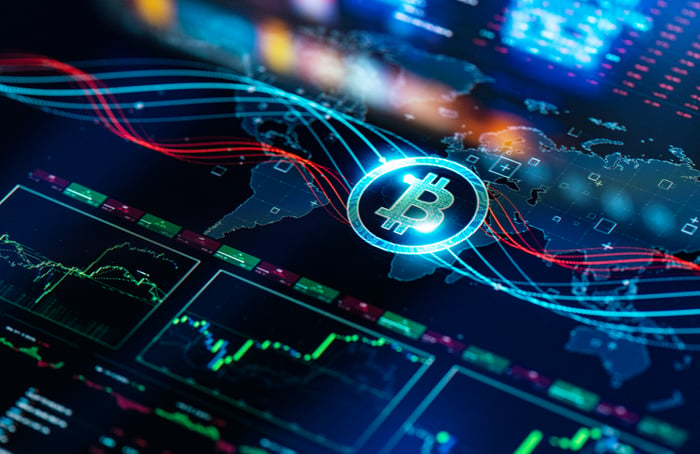Key Points
-
Bitcoin is perhaps the most mainstream cryptocurrency — attracting investors due to its scarcity and broadening adoption.
-
XRP is bringing much-needed enhancements to clunky payments infrastructure.
-
While XRP’s utility is clear, its applications may be narrower in scope compared to that of Bitcoin.
- 10 stocks we like better than XRP ›
Bitcoin is perhaps the most mainstream cryptocurrency — attracting investors due to its scarcity and broadening adoption.
XRP is bringing much-needed enhancements to clunky payments infrastructure.
While XRP’s utility is clear, its applications may be narrower in scope compared to that of Bitcoin.
When it comes to digital currency, a handful of names consistently dominate the conversation. Chief among them are Bitcoin and XRP (CRYPTO: XRP) — two of the most recognizable players in the cryptocurrency market.
As of the closing bell on Sept. 12, XRP has surged 48% so far this year — exactly double Bitcoin’s gains. With that kind of momentum behind it, investors may be wondering if XRP is positioned to emerge as the next heavyweight contender in the crypto arena.
Where to invest $1,000 right now? Our analyst team just revealed what they believe are the 10 best stocks to buy right now. Continue »
What makes Bitcoin unique?
At its core, Bitcoin’s appeal stems from its scarcity. With a fixed supply capped at 21 million coins, it is inherently designed as a deflationary asset — a sharp contrast to fiat currencies that can be printed without limit. This structural distinction has led many in the financial world to dub Bitcoin “digital gold” — a title that underscores both its rarity and the effort required to produce new coins.
Bitcoin Price data by YCharts
Another factor driving Bitcoin’s prominence is its growing role in corporate treasury. Companies such as Strategy (formerly MicroStrategy) and GameStop have added Bitcoin to their balance sheets as part of their cash management operations.
On an even larger scale, several sovereign nations are evaluating the creation of strategic Bitcoin reserves — effectively mirroring corporate treasury practices, but at a global, more sophisticated scale.
These developments highlight how ubiquitous Bitcoin has become — increasingly viewed not only as a store of value, but also as a hedge against inflation and a tool to mitigate systemic financial risk.
XRP offers compelling utility in the payments world
XRP has carved out a distinct niche within the evolving cryptocurrency landscape: global payments.
Today, thousands of enterprises depend on the Society for Worldwide Interbank Financial Telecommunication (SWIFT) network to settle cross-border transactions. Yet many view SWIFT’s infrastructure as slow and expensive — with businesses often bearing the brunt of hefty foreign exchange fees and multiday settlement times.
XRP aims to solve these pain points through near-instant processing and nominal transaction costs. With the global market for cross-border transactions measured in the trillions of dollars annually, XRP’s opportunity is vast — positioning the cryptocurrency with disruptive, tangible utility.
However, the catch is where XRP actually operates: XRP transactions occur on the Ripple network.
While Ripple has forged relationships with banks and financial institutions, the adoption of its infrastructure does not necessarily translate into widespread usage of XRP. Put simply, Ripple’s success as a payments platform does not automatically fuel proportional demand for the XRP token.

Image source: Getty Images.
Could XRP be positioned as the next Bitcoin?
Given this analysis, it’s evident that Bitcoin and XRP occupy fundamentally different roles in the digital asset ecosystem.
Bitcoin functions as a macro asset — a hedge against inflation, a reserve instrument, and even a potential bargaining chip in global economic dialogue. By contrast, XRP specializes in a narrower application: improving the speed and cost of cross-border payments.
These distinctions are critical for investors to grasp. Bitcoin’s underlying value is derived from its scarcity and singular status as a decentralized asset — a multi-platform store of value. XRP’s value proposition, on the other hand, stems from enhancing efficiency within an industry that is ripe for disruption, but where usage of the token is not a requirement.
While XRP has clear utility and the potential to capture a meaningful share of an enormous and growing payments market, its investment profile should not be conflated with that of Bitcoin. Bitcoin is increasingly gaining momentum in the alternative asset world, whereas XRP remains an application-driven opportunity with specific demand needs.
For these reasons, I do not see XRP emerging as the next Bitcoin-style investment in the crypto world.
Should you invest $1,000 in XRP right now?
Before you buy stock in XRP, consider this:
The Motley Fool Stock Advisor analyst team just identified what they believe are the 10 best stocks for investors to buy now… and XRP wasn’t one of them. The 10 stocks that made the cut could produce monster returns in the coming years.
Consider when Netflix made this list on December 17, 2004… if you invested $1,000 at the time of our recommendation, you’d have $648,369!* Or when Nvidia made this list on April 15, 2005… if you invested $1,000 at the time of our recommendation, you’d have $1,089,583!*
Now, it’s worth noting Stock Advisor’s total average return is 1,060% — a market-crushing outperformance compared to 189% for the S&P 500. Don’t miss out on the latest top 10 list, available when you join Stock Advisor.
See the 10 stocks »
*Stock Advisor returns as of September 15, 2025
Adam Spatacco has no position in any of the stocks mentioned. The Motley Fool has positions in and recommends Bitcoin and XRP. The Motley Fool has a disclosure policy.
The views and opinions expressed herein are the views and opinions of the author and do not necessarily reflect those of Nasdaq, Inc.
#XRP #Ripple #Bitcoin